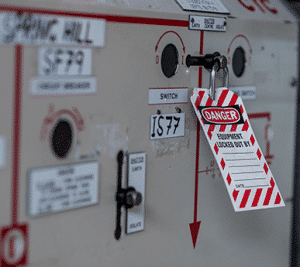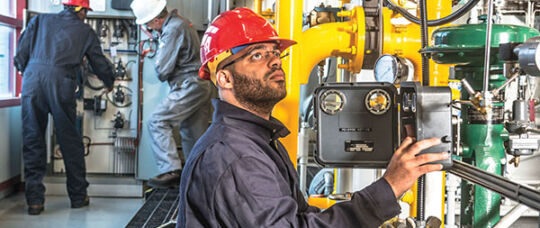Roar Solutions Things To Know Before You Get This
Roar Solutions Things To Know Before You Get This
Blog Article
What Does Roar Solutions Do?
Table of ContentsRumored Buzz on Roar SolutionsThe Buzz on Roar SolutionsThe Only Guide to Roar Solutions
In such an atmosphere a fire or surge is feasible when three standard conditions are fulfilled. This is usually referred to as the "hazardous location" or "burning" triangle. In order to protect setups from a potential surge a method of analysing and identifying a potentially unsafe area is needed. The purpose of this is to make sure the appropriate option and setup of devices to ultimately stop a surge and to ensure security of life.
(https://gravatar.com/thomascarrillo4740)
No equipment should be set up where the surface area temperature of the devices is more than the ignition temperature of the provided threat. Below are some common dust harmful and their minimum ignition temperature. Coal Dirt 380C 225C Polythene 420C (thaws) Methyl Cellulose 420C 320C Starch 460C 435C Flour 490C 340C Sugar 490C 460C Grain Dust 510C 300C Phenolic Resin 530C > 450C Aluminium 590C > 450C PVC 700C > 450C Soot 810C 570C The chance of the hazard existing in a focus high adequate to create an ignition will vary from place to place.
In order to identify this danger a setup is split right into locations of threat relying on the quantity of time the dangerous exists. These areas are described as Zones. For gases and vapours and dirts and fibers there are three zones. Zone 0 Zone 20 An unsafe atmosphere is highly likely to be present and might exist for long durations of time (> 1000 hours per year) or perhaps continually Area 1 Area 21 An unsafe ambience is feasible however not likely to be existing for extended periods of time (> 10 450 C [842 F] A category of T6 suggests the minimal ignition temperature level is > 85 C [185 F] Harmful location electrical equipment maybe made for usage in greater ambient temperatures. This would indicated on the ranking plate e.g. EExe II C T3 Ta + 60C( This suggests at 60C ambient T3 will certainly not be surpassed) T1 T1, T2, T3, T4, T5, T6 T2 T2, T3, T4, T5, T6 T3 T3, T4, T5, T6 T4 T4, T5, T6 T5 T5, T6 T6 T6 A T Class rating of T1 suggests the optimum surface temperature created by the tool at 40 C is 450 C. Presuming the connected T Course and Temperature level ranking for the devices are suitable for the area, you can constantly utilize an instrument with a more stringent Department score than required for the location. There isn't a clear solution to this question unfortunately. It really does rely on the sort of equipment and what repair services require to be accomplished. Equipment with details test treatments that can't be performed in the area in order to achieve/maintain third event rating. Must come back to the factory if it is prior to the tools's service. Area Repair By Authorised Employee: Challenging testing may not be required nevertheless specific procedures might need to be complied with in order for the equipment to keep its 3rd party score. Authorized workers must be utilized to do the work properly Fixing should be a like for like substitute. New part should be taken into consideration as a direct replacement needing no unique testing of the devices after the fixing is total. Each piece of tools with a harmful ranking ought to be examined individually. These are outlined at a high level listed below, but also for more comprehensive info, please refer straight to the standards.
5 Simple Techniques For Roar Solutions
The tools register is a thorough data source of devices records that consists of a minimum collection of fields to recognize each thing's place, technical parameters, Ex-spouse classification, age, and environmental information. This info is important for tracking and taking care of the devices effectively within hazardous locations. In contrast, for periodic or RBI sampling evaluations, the quality will be a combination of Thorough and Close assessments. The ratio of Thorough to Close examinations will be determined by the Devices Risk, which is analyzed based on ignition threat (the likelihood of a source of ignition versus the chance of a flammable atmosphere )and the harmful area category
( Zone 0, 1, or 2). This variant will additionally influence the resourcing requirements for work preparation. Once Lots are specified, you can develop tasting plans based on the example size of each Great deal, which describes the number of random tools items to be checked. To determine the needed example size, two elements need to be examined: the dimension of the Lot and the classification of inspection, which suggests the degree of initiative that should be applied( lowered, normal, or enhanced )to the assessment of the Whole lot. By combining the classification of assessment with the Whole lot size, you can then establish the proper denial criteria for a sample, indicating the permitted variety of defective products located within that example. For even more information on this procedure, please describe the Power Institute Standards. The IEC 60079 typical advises that the optimum period in between evaluations must not go beyond 3 years. EEHA examinations will also be conducted outside of RBI campaigns as component of set up upkeep and devices overhauls or repair work. These evaluations can be credited toward the RBI sample dimensions within the influenced Lots. EEHA evaluations are carried out to determine faults in electrical equipment. A weighted racking up system is important, as a single tool might have numerous mistakes, each with varying degrees of ignition danger. If the consolidated rating of both examinations is much less than two times the mistake score, the Whole lot is deemed acceptable. If the Whole lot is still taken into consideration unacceptable, it has to undertake a complete examination or reason, which may set off more stringent examination procedures. Accepted Lot: The sources of any kind of faults are identified. If an usual failing mode is found, added equipment might require maintenance. Mistakes are classified by severity( Security, Integrity, Home cleaning ), making sure that urgent concerns are evaluated and addressed without delay to reduce any influence on safety or procedures. The EEHA database must track and record the lifecycle of mistakes along with the rehabilitative actions taken. Applying a robust Risk-Based Assessment( RBI )strategy is critical for guaranteeing conformity and safety and security in handling Electric Devices in Hazardous Areas( EEHA) (eeha courses). Automated Fault Rating and Lifecycle Monitoring: Effortlessly handle mistakes and track their lifecycle to boost inspection accuracy. The introduction of this assistance for risk-based evaluation even more enhances Inspectivity's placement as a best-in-class solution for regulatory compliance, in addition to for any kind of asset-centric examination use case. If you have an interest in finding out more, we invite you to request a demonstration and find exactly how our remedy can change your EEHA management processes.
Everything about Roar Solutions

In terms of explosive threat, a hazardous location is a setting in which an eruptive environment exists (or may be expected to be existing) in amounts that need special precautions for the construction, setup and use of tools. eeha training. In this post we check out the challenges encountered in the office, the danger control steps, and the required expertises to work safely
It issues of contemporary life that we manufacture, save or manage a range of gases or fluids that are considered combustible, and a variety of dusts that are considered flammable. These compounds can, in specific conditions, develop explosive environments and these can have major and tragic effects. A lot of us recognize with the fire triangle get rid of any among the three aspects and the fire can not occur, however what does this mean in the context of hazardous locations? When damaging this down into its most basic terms it is essentially: a mix of a particular amount of launch or leakage of a specific material or material, blending with ambient oxygen, and the presence of a source of ignition.
In the majority of instances, we can do little about the levels of oxygen airborne, yet we can have substantial impact on sources of ignition, for instance electrical devices. Unsafe areas are documented on the dangerous area category illustration and are recognized on-site by the triangular "EX-SPOUSE" indication. Right here, among various other vital info, areas are divided right into 3 kinds relying on the hazard, the likelihood and duration that an explosive environment will certainly exist; Zone 0 or 20 is considered the most dangerous and Area 2 or 22 is deemed the least.
Report this page